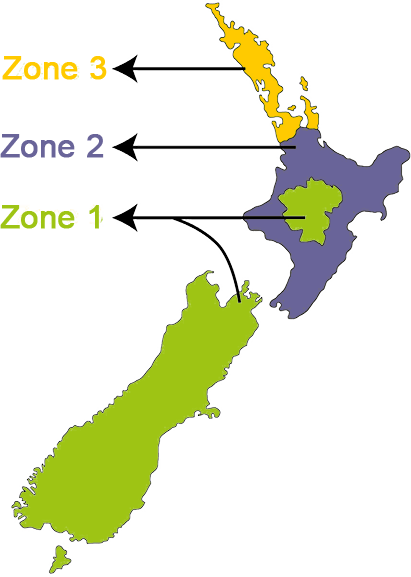
Growing Guide
Glasshouse. Humid, temperate and moist. Full sun/part shade.
5-10cm
15-20cm
15-20cm
60-90cm2
5-10cm
Directly sown
42-56
224-280
Amend with compost or aged manure if your soil is lacking.
Plant in early spring if possible.
If you live in a warmer climate, you can plant at any time.
Slice off the fingers, making sure each rhizome piece is 1 to 2 inches long with at least one bud.
Allow the pieces to dry for 24-48 hours before planting, as this helps to control for possible root rot.
Plant cut sections at least 12 inches apart no deeper than 1 inch.
For commercial cultivation, ginger is usually planted in double rows 1 foot apart with a working path between rows.
Water well after planting.
Leaves will emerge after about 1 week.
Water sparingly but deeply after you see growth.
Transplant ginger plants into a permanent bed in autumn of their second year.
Space the plants 70-150cm apart.
Keep them mulched and well-watered during their first summer in the ground.
If you don’t already have access to a ginger plant, you can purchase a chunk of ginger about the size of your thumb or a little longer.
Look for firm, light-colored ginger roots with bumpy little buds at the tips.
Organic ginger is preferable, as regular grocery store ginger is treated with chemicals that prevent sprouting.
Prepare a deep pot with a drainage hole in the bottom.
Keep in mind that the thumb-size chunk may grow into a 91 cm.
Plant at maturity, so look for a large container.
Fill the pot with a loose, rich, well-drained potting medium.Soak the ginger root in a bowl of warm water for several hours or overnight.
Then plant the ginger root with the bud pointing up and cover the root with 1 to 2 inches (2.5-5 cm.) of soil.
Water lightly.
If you are growing ginger root in the garden you can start stealing little bits of it once it is about four months old.
Just dig carefully at the side of a clump.
(This “green ginger” does have a lot less flavor than the mature stuff, though.) The best time to harvest ginger is any time after the leaves have died down.
Usually it takes eight to ten months to get to that point.
After the seed pods dry out and turn light brown.
Collect multiple seedpods to increase the likelihood of finding at least one viable seed.
Avoid seed pods with obvious signs of insect damage such as holes or black spots.
Break open the seedpods and remove the small, dull brown seeds.
Soak the seeds in a bowl of cool water overnight to determine which are viable.
Scoop out and discard any seeds that float to the surface.
Sow the seeds that sink to the bottom.
Prepare a container for each ginger plant you wish to grow.
Fill standard, 8cm starter pots with a mixture of half seed-starting compost and half medium-grit sand.
Add water until the growing mixture is saturated and the water trickles freely from the drainage hole at the base.
Let the growing mixture drain for 15 or 20 minutes before sowing the seeds.
Sow one ginger seed in each pot.
Press the seed onto the surface of the growing mixture.
Cover the seed with a very thin layer of the growing mixture.
Gently tamp the soil.
Place the starter pots on a germination mat somewhere warm and dark, or place them outdoors where daytime temperatures stay at 70 degrees Fahrenheit.
Keep the growing mixture moderately moist in the top inch.
Move the starter pots indoors in approximately six weeks.
Cover each starter pot with a clear plastic bag.
Place the pots inside a refrigerator for six to eight weeks to chill the seeds.
Keep the growing mixture moist at all times, but allow it to dry out slightly in the top 0.5cm between waterings to avoid overwatering.
Move the pots back outdoors to a cool, lightly shaded area where daytime temperatures stay around 50 degrees Fahrenheit.
Continue to provide water whenever the growing mixture dries out slightly in the top 0.50cm.
Watch for germination in four to six weeks.
Repeat these steps if no seedlings emerge in two months.
Move the starter pots to a sheltered area as the seedlings emerge.
Water weekly.
Transplant the ginger seedlings into 17cm greenhouse pots filled with mildly acidic, fast-draining potting mix once they produce several sets of mature leaves.
Grow them under light shade for one to two years, or until they are well-established with an abundance of foliage.

Zone 1 - Cool
Zone 2 - Temperate
Zone 3 - Subtropical
November , December